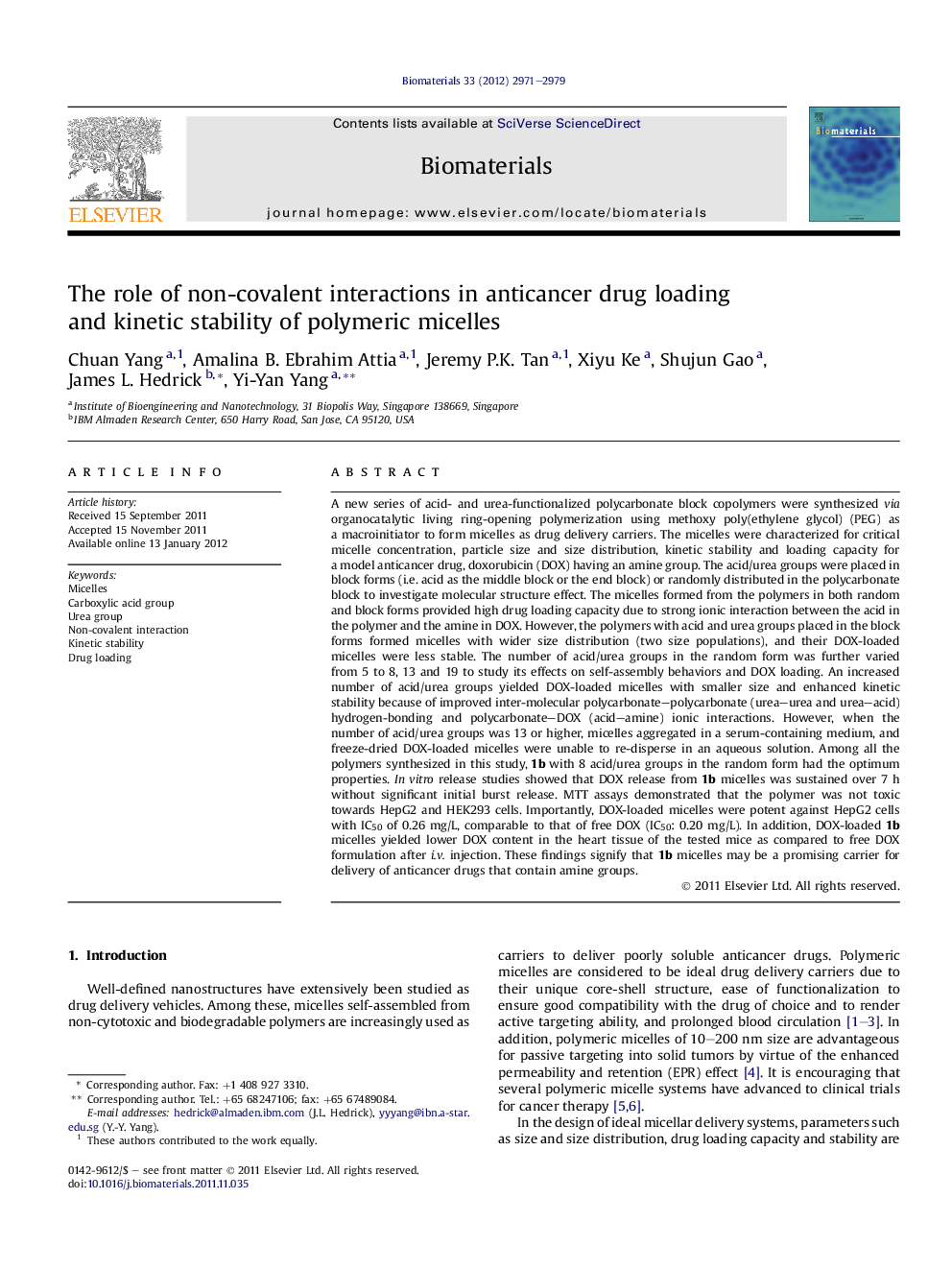| کد مقاله | کد نشریه | سال انتشار | مقاله انگلیسی | نسخه تمام متن |
|---|---|---|---|---|
| 7325 | 548 | 2012 | 9 صفحه PDF | دانلود رایگان |

A new series of acid- and urea-functionalized polycarbonate block copolymers were synthesized via organocatalytic living ring-opening polymerization using methoxy poly(ethylene glycol) (PEG) as a macroinitiator to form micelles as drug delivery carriers. The micelles were characterized for critical micelle concentration, particle size and size distribution, kinetic stability and loading capacity for a model anticancer drug, doxorubicin (DOX) having an amine group. The acid/urea groups were placed in block forms (i.e. acid as the middle block or the end block) or randomly distributed in the polycarbonate block to investigate molecular structure effect. The micelles formed from the polymers in both random and block forms provided high drug loading capacity due to strong ionic interaction between the acid in the polymer and the amine in DOX. However, the polymers with acid and urea groups placed in the block forms formed micelles with wider size distribution (two size populations), and their DOX-loaded micelles were less stable. The number of acid/urea groups in the random form was further varied from 5 to 8, 13 and 19 to study its effects on self-assembly behaviors and DOX loading. An increased number of acid/urea groups yielded DOX-loaded micelles with smaller size and enhanced kinetic stability because of improved inter-molecular polycarbonate–polycarbonate (urea–urea and urea–acid) hydrogen-bonding and polycarbonate–DOX (acid–amine) ionic interactions. However, when the number of acid/urea groups was 13 or higher, micelles aggregated in a serum-containing medium, and freeze-dried DOX-loaded micelles were unable to re-disperse in an aqueous solution. Among all the polymers synthesized in this study, 1b with 8 acid/urea groups in the random form had the optimum properties. In vitro release studies showed that DOX release from 1b micelles was sustained over 7 h without significant initial burst release. MTT assays demonstrated that the polymer was not toxic towards HepG2 and HEK293 cells. Importantly, DOX-loaded micelles were potent against HepG2 cells with IC50 of 0.26 mg/L, comparable to that of free DOX (IC50: 0.20 mg/L). In addition, DOX-loaded 1b micelles yielded lower DOX content in the heart tissue of the tested mice as compared to free DOX formulation after i.v. injection. These findings signify that 1b micelles may be a promising carrier for delivery of anticancer drugs that contain amine groups.
Journal: Biomaterials - Volume 33, Issue 10, April 2012, Pages 2971–2979